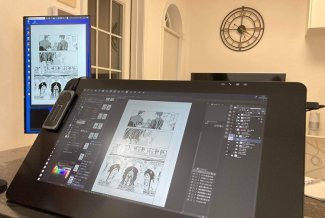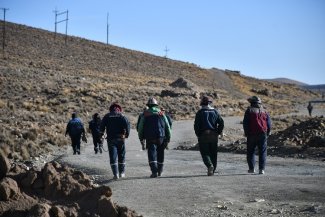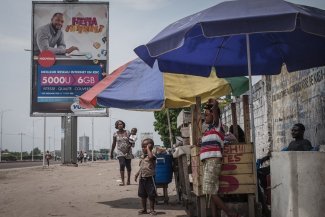Kate and William, otherwise known as the Duke and Duchess of Cambridge, visited Mumbai’s vast slum of Dharavi – made famous by Oscar-winning film Slumdog Millionaire – earlier this month as part of their royal tour to India and Bhutan.
Quite what to make of this ’Slum Lords’ meet ’Slumdogs’ event is open to wide conjecture.
But what’s certain is that one of the richest and most privileged couples in the world, the future King and Queen of England, met with India’s poorest.
Dharavi sits at the navel of Mumbai, India’s largest city and commercial capital. An estimated 800,000 to one million people live in the slum, which is said to be Asia’s largest.
Dharavi’s 2.39 square kilometres – squeezed in the junction between Mumbai’s two great metropolitan railway lines, the Central Line and the Western Line – make it one of the most densely populated areas on earth, with a density of a minimum of 334,728 people per square kilometre.
The community has severe problems with public health, filthy and broken public lavatories, open sewers, or “nullahs”, and the nearby Mahim Creek river is polluted and used as an open-air toilet.
According to India’s latest census, over 65 million people in this nation of 1.2 billion live in slums, defined as “residential areas where dwellings are unfit for human habitation”.
India’s growth over the last two decades has resulted in one of the largest human migrations in history – from the Indian countryside to its growing cities.
An estimated 160 million people have moved to the cities in the last two decades. And another 300 million are projected to move to urban areas in the next 20 to 25 years.
This exponential growth has put enormous pressure on sanitation, healthcare, education and law and order public services.
Mumbai’s population has almost doubled in size since 1991 to more than 20 million. It’s estimated that over half of the city’s people live in slums or on the streets.
The residents of Dharavi
The visit of Kate and William to Dharavi was met with polite reservation by Dharavi residents.
“I would love to show them the real Dharavi, especially the art of pottery. This is an ancient, ancient skill,” said Abbas Galwani, a 36-year-old master potter, who now heads his family’s 90-year-old business.
“But when a VIP person is coming to Dharavi. They clear up Dharavi, don’t show the reality. They present an image of Dharavi as a clean place, but this is just not true.”
In 2013 the Maharashtra State Government announced a proposed US$2 billion redevelopment of the slum, the so-called Dharavi Redevelopment Project.
But to date little development has been forthcoming.
“If the royals are coming here they should ask the government to give poor people decent housing,” said Akram Muna, a tannery owner, aged 46.
“We need better roads, green spaces and decent schools. Dharavi is a very dirty place. The streets are too narrow and the electricity is dangerous, it could kill you any time.
"In the last 10 years there has only been 10 per cent change. What’s changed? Nothing has changed,” he said more in resignation than anger.
Dharavi was founded in 1882 during the British colonial era, due in part to the expulsion of Indian residents and factories from the southern Fort area of Bombay, as the city was then called.
By the 1920’s communities of fishers, the “Koliwadas”, and potters, “Khumbawalas” had also become firmly established in the slum.
From here Dharavi grew into “the workshop of Bombay”, with a local economy now worth an estimated US$500 million a year.
Despite its myriad problems, the slum is a marvel of industry, creativity — and the life-skills of survival.
Potters, leather workers, small garment workshops, all jostle with small one-room apartments for space, air and light in a labyrinth of narrow dusty streets, passageways and gullies.
Manajaty Rajah, a 45-year-old day labourer, said: “If the royals stay in a posh building I’m sure they’ll be happy.
“But if you’re in a mansion you don’t see the reality of life in the slums. You have to come here to this little gully to see the reality and the suffering. I’m a worker and if they come here they can see how I work. If I could talk to them I could share my problems and show them this little gully.”









